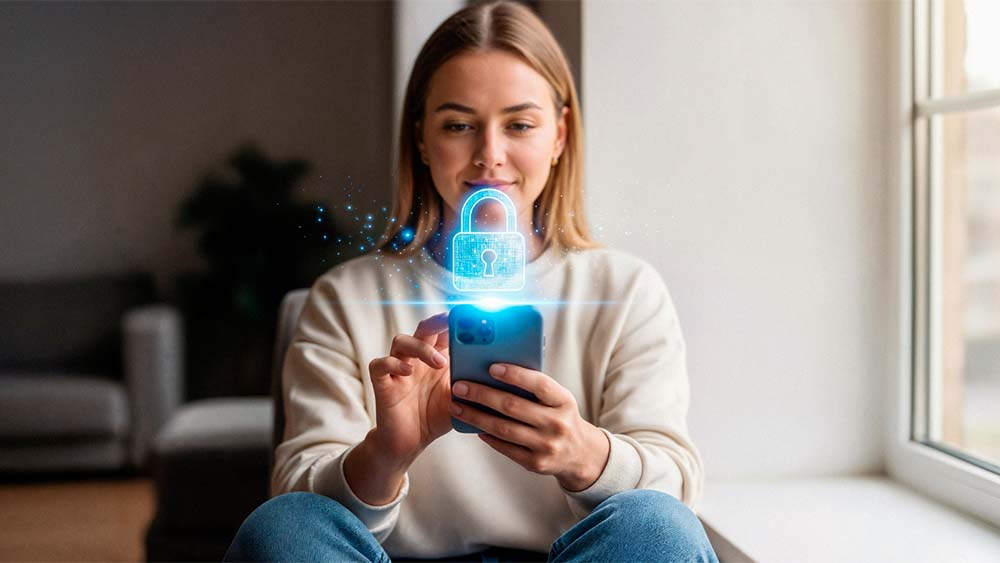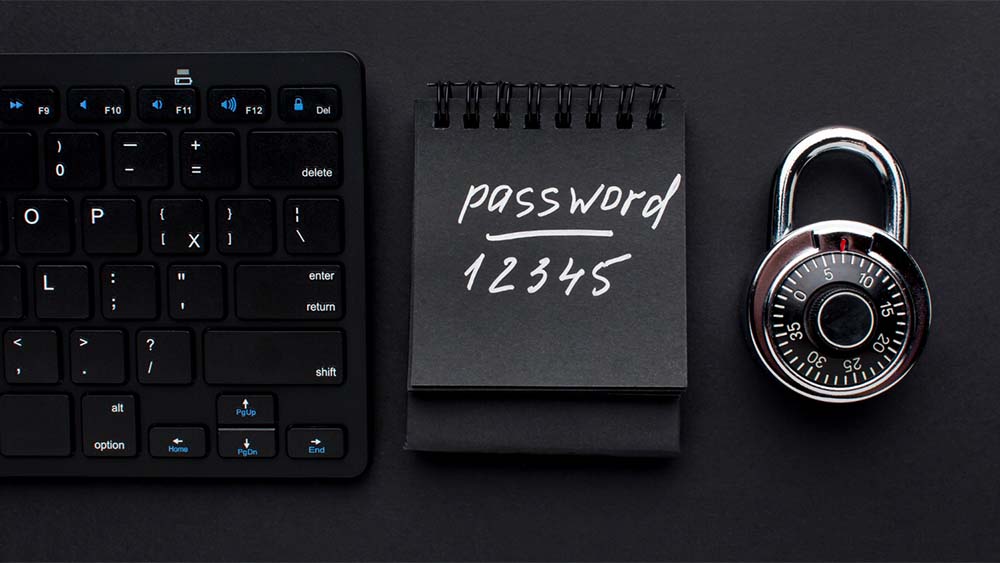The short version: Lock down your “crown jewels” (email, telephone number, and financial details) with a strong authentication system and recovery. Also, you can stop your credit from being frozen, reduce the information you’re publicly linked to and develop a straightforward incident-response program. Gadgets and gimmicks can help less than disciplined behavior.
How do you identify a person? are the most common targets that attackers actually want to know about
The majority of identity theft is classified into four categories:
-
Account Takeover (ATO): Breaking into your accounts (email or bank accounts and social).
Solution: Unique passwords + MFA, and a solid recovery. -
New Account Fraud: Opening credit/loans in your name.
Fix: Credit freezes + monitoring/alerts. -
SIM Swap and Phone Hijacking Switching your phone number to their SIM in order to take over the codes.
Fix: Carrier PIN/port-out lock + MFA for the app or hardware (not text message). -
Impersonation/Privacy Leaks: Data brokers, oversharing, and breached records used for social engineering.
Fix: Data minimization + broker opt-outs + tighter social privacy.
Step 1: Secure the crown jewels
The principal mail address lets you reset your password across the globe. It’s like the vault of a bank.
-
Make use of the password management system and create an lengthy, unique passphrase for your primary email or bank account, as well as the your password manager.
-
Make sure to turn off MFA (prefer an authenticator application as well as a the hardware key for security Avoid SMS when it is possible).
-
Keep your backup passwords in your password manager’s safe notes.
-
Examine the recovery of your account Make sure that your recovery email or phone is current and secured by MFA, too.
-
Allow alerts for new logins and trim devices or sessions that you don’t recognize.
Pro-tip: Use an additional, secret email (not publicized anywhere) to act as a recovery email for your primary accounts.
Step 2. Freeze the items thieves require to commit credit fraud
An freezing of credit prevents lenders from opening credit under your name without your consent. It’s the only effective anti-fraud measure you can make.
-
Put the freezer at the bureaus with the largest branches. It’s completely free and irreversible.
-
Create strong PINs and passphrases to lift freezing temporarily.
-
You should consider freezing innovis as well as ChexSystems (bank account screening) Also, consider freezing your bank accounts also for your kids as well.
-
Include Transaction alerts on credit or bank cards (every purchase alert).
Fraud alert and. freeze alerts are used to alert lenders, while freezes prevent any new pulls of credit.
Step 3: Eliminate SMS as your last line of defense
SMS codes can be easily phished and are vulnerable for SIM swaps.
-
If possible, use apps-based codes (TOTP) or security keys (FIDO2/U2F).
-
Create an PIN for your carrier account as well as add a locks for port-outs to stop SIM swaps.
-
Do not use an identical number for all of your needs. Think about using a second number to sign-up (note that some services require a mobile number).
Step 4 — Reduce the amount of data that leaks out to you to
Public footprint and social media
-
Secure the list of friends and followers and keep track of information about contacts switch off the last seen or active status and stay clear of geotags in real-time.
-
Do not share images of IDs or boarding passes, badges or tickets to events.
-
Utilize Private lists or Close Friends to share family-related content.
Data brokers and “people search”
-
Get rid of the major brokers and aggregators Repeat every quarter (they replenish).
-
Make use of an email or aliasing service or the masked phone to remove accounts from your actual identifiers.
-
Think about online cards for a single-time merchant to minimize the risk of being compromised.
Step 5 – Cleanliness of the device and browser (quietly but with high impact)
-
Keep your browsers and OS up-to-date Restart weekly to ensure the patches are in place.
-
Make use of a modern browser that has automated HTTPS as well as the ability to isolate your site as well as the ability to disable or remove unwanted extensions.
-
Switch off the saving of passwords in browsers in the event that your password manager manages it.
-
On mobile devices, restrict the app’s permissions (contacts camera, contacts microphone and place of use) to while using or Request Every Time.
-
Enable disk encryption (BitLocker/FileVault) and short auto-lock timers.
Sixth step — Distinguish identities according to risk
-
High-risk financial/administrative accounts: dedicated email, strongest MFA, no third-party app access.
-
Everyday social/shopping: another email/alias + strict privacy settings.
-
Persona and creator of the public: a separate profile Never mix with private life.
This segmentation decreases the radius of blast if a single identity is revealed.
Step 7: Backup as if you’re sure that someone will eventually gain access
Breaches happen. Your ability to withstand them is crucial.
-
Make sure to follow the 3-2-1 rule for backups Three copies two media types one Off-site (cloud is counted).
-
Check by restoring an image once, so that you don’t learn under stress.
-
Maintain your exported copy of your most important contacts and 2FA backup codes as well as key documents in a vault that is encrypted.
Step 8 – Be aware of warning signs (and what you can do)
A sign of trouble
-
Password reset emails that you did not need to
-
Alerts for new devices/logins
-
An unanticipated text message “your Code contains …” messages
-
Accounts or inquiries about credit that you aren’t sure of
-
Unexpected disappearance of the mobile (possible SIM swap)
Instant actions
-
First, secure email: Change passwords, cancel sessions or rotate MFA.
-
Verify other important accounts (bank, PayPal, cloud storage) Change passwords, check the activity.
-
Credit can be frozen (if it isn’t already).
-
Contact your service provider to block the number and set/confirm port-out protections.
-
Note everything (screenshots and dates cases numbers).
-
In the event of a confirmed fraud on your identity (new accounts that are in your name) You must file an official complaint and adhere to the step-bystep remediation procedure from your state’s consumer protection website.
-
You might want to consider the addition of to your IRS IP PIN (U.S.) to prevent fraudulent tax returns.
What really isn’t going to do is
-
VPNs designed for everyday security of your identity ideal for hostile Wi-Fi however they can’t conceal your identity from websites you connect to or prevent the possibility of fraud.
-
“Dark web scans” as a panacea beneficial as a indication that data leaks but they do not stop the possibility of compromise.
-
Ultra-complex passwords for short passwords: length + uniqueness beats smart symbol soup everytime.
-
Security through obscurity: changing your name on social networks isn’t an option when everything else is open.
Role-based quick wins
For families
-
Create an common vault within your password manager to manage streaming and utilities (no sending passwords to DM’s).
-
Make sure MFA is turned on to allow children’s gaming or email Keep the backup codes in a place that parents is able to access.
-
Freeze credit of minors now to prevent future hassles.
For freelancers and small-sized businesses
-
Add MFA and SSO on the few essential applications you depend on.
-
Avoid sharing logins Utilize roles and then revoke access when offboarding.
-
Maintain the client’s PII stored in organized, access-controlled systems. Never in unorganized spreadsheets.
A 30-Minute Identity Lockdown Sprint
-
First email: Long passphrase, MFA (app or key) and backup codes stored.
-
Finance and banking: MFA on; alerts for transactions the review of the payees.
-
Carrier account: Add account PIN and port-out lock.
-
Bureaus of Credit: Freeze all; save unfreeze PINs in a secure place.
-
Password Manager: Transfer browser-specific passwords and repair broken or reused ones.
-
Privacy of social networks: Hide contact info/friends lists; block discoverability via email or phone.
-
Data brokers Send opt-out requests to the top listings and calendars for repeats every quarter. quarterly repeat.
An incident-response kit that is simple (save this in a safe place)
-
Master check-list (the “Immediate actions” above)
-
Contact numbers for bank department of fraud as well as your mobile provider
-
Credit bureau freeze/unfreeze info
-
Notes and PDFs that have 2FA backup codes (encrypted)
-
Template dispute letter for fraudulent accounts
-
A trusted person who can assist you if you’re locked out
Quick FAQ
Do I require an account manager for passwords using the passkey for my account?
Yes–for the moment. Passkeys are great and are growing rapidly, however the majority of services still rely on passwords. Managers can also save safe notes and backups with 2FA.
Do I need to pay for monitoring of my identity?
Monitoring could alert you earlier but it’s not an alternative to MFA, freezes and clear recovery. If your budget is limited start with the basics.
Does SMS MFA have any value?
Not worthless, but more effective than none. Move the most important accounts onto apps or hardware keys whenever you can.
Checklist for self-audit (print this)
-
Primary email has long unique passphrase + app/hardware MFA
-
Backup codes stored; recovery email/phone secured with MFA
-
Credit frozen at all major bureaus (and for minors)
-
Carrier account has PIN and port-out lock
-
Password manager in use; no reused/compromised passwords remain
-
Banking/card alerts enabled; daily glance at transactions
-
Social profiles locked down; discoverability limited; no real-time location
-
Data broker opt-outs submitted (and calendared quarterly)
-
OS/browser auto-updates on; minimal extensions; device encryption enabled
-
Incident-response kit prepared and tested
Final Thought
Security for your identity isn’t just about disappearing. It’s about being in control and resiliency. If you shut down the three platforms that all the other stuff is dependent on (email phones, e-mail and credit) limit what you expose, and practice the actions you’ll take on the day of disaster You’ll be able to defeat the majority of real-world threats, without being the paranoid








